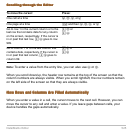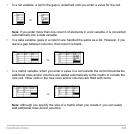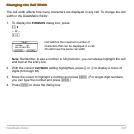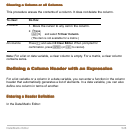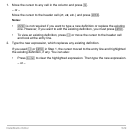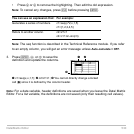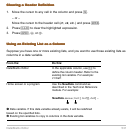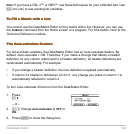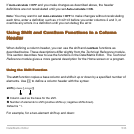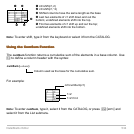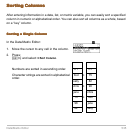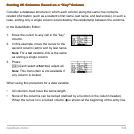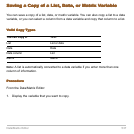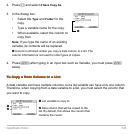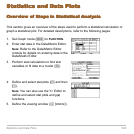
Data/Matrix Editor 533
If Auto-calculate = OFF and you make changes as described above, the header
definitions are not recalculated until you set
Auto-calculate = ON.
Note: You may want to set Auto-calculate = OFF to make changes without recalculating
each time, enter a definition such as c1=c2+c3 before you enter columns 2 and 3, or
override any errors in a definition until you can debug the error.
Using Shift and CumSum Functions in a Column
Using Shift and CumSum Functions in a Column Using Shift and CumSum Functions in a Column
Using Shift and CumSum Functions in a Column
Header
HeaderHeader
Header
When defining a column header, you can use the shift and cumSum functions as
described below. These descriptions differ slightly from the Technical Reference module.
This section describes how to use the functions in the Data/Matrix Editor. The Technical
Reference module gives a more general description for the Home screen or a program.
Using the Shift Function
Using the Shift FunctionUsing the Shift Function
Using the Shift Function
The
shift function copies a base column and shifts it up or down by a specified number of
elements. Use † to define a column header with the syntax:
For example, for a two-element shift up and down:
shift (column [,integer])
Ê Ë
Ê Column used as the base for the shift.
Ë Number of elements to shift (positive shifts up; negative shifts down).
Default is
M1.



